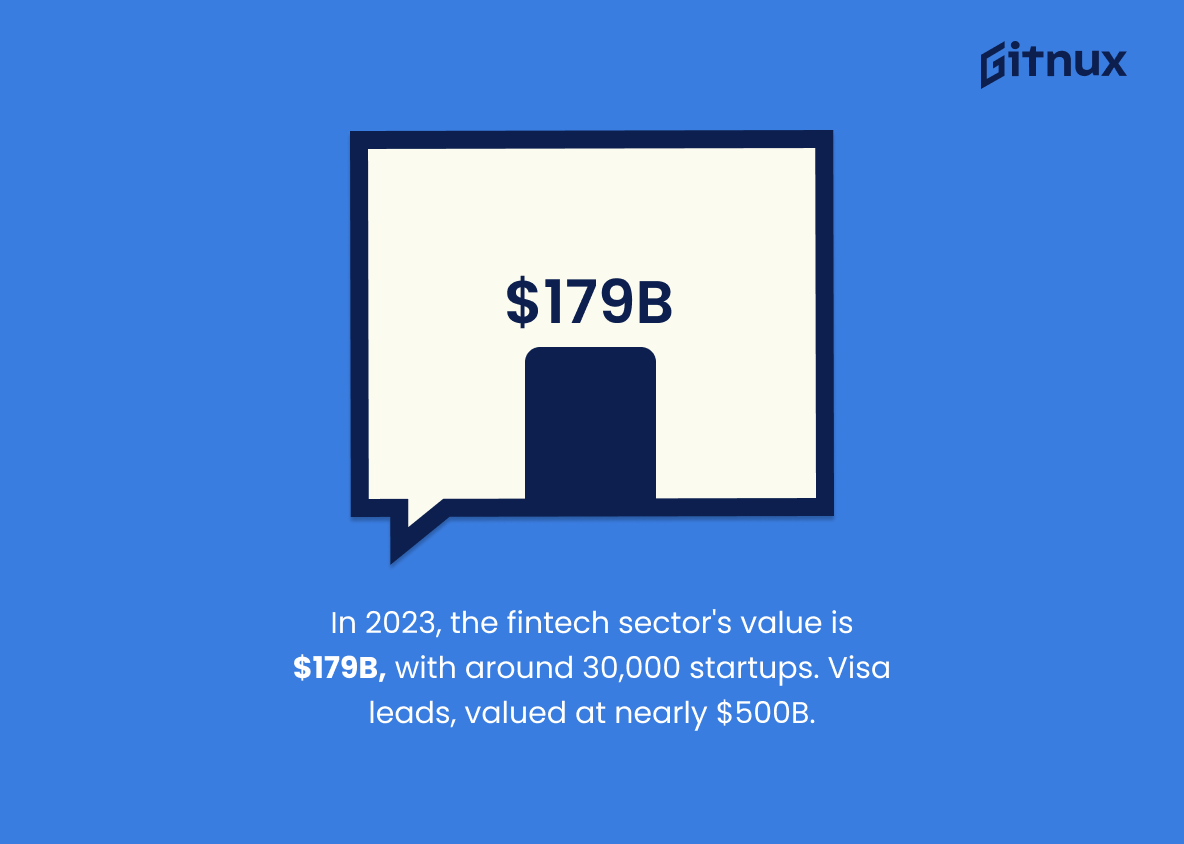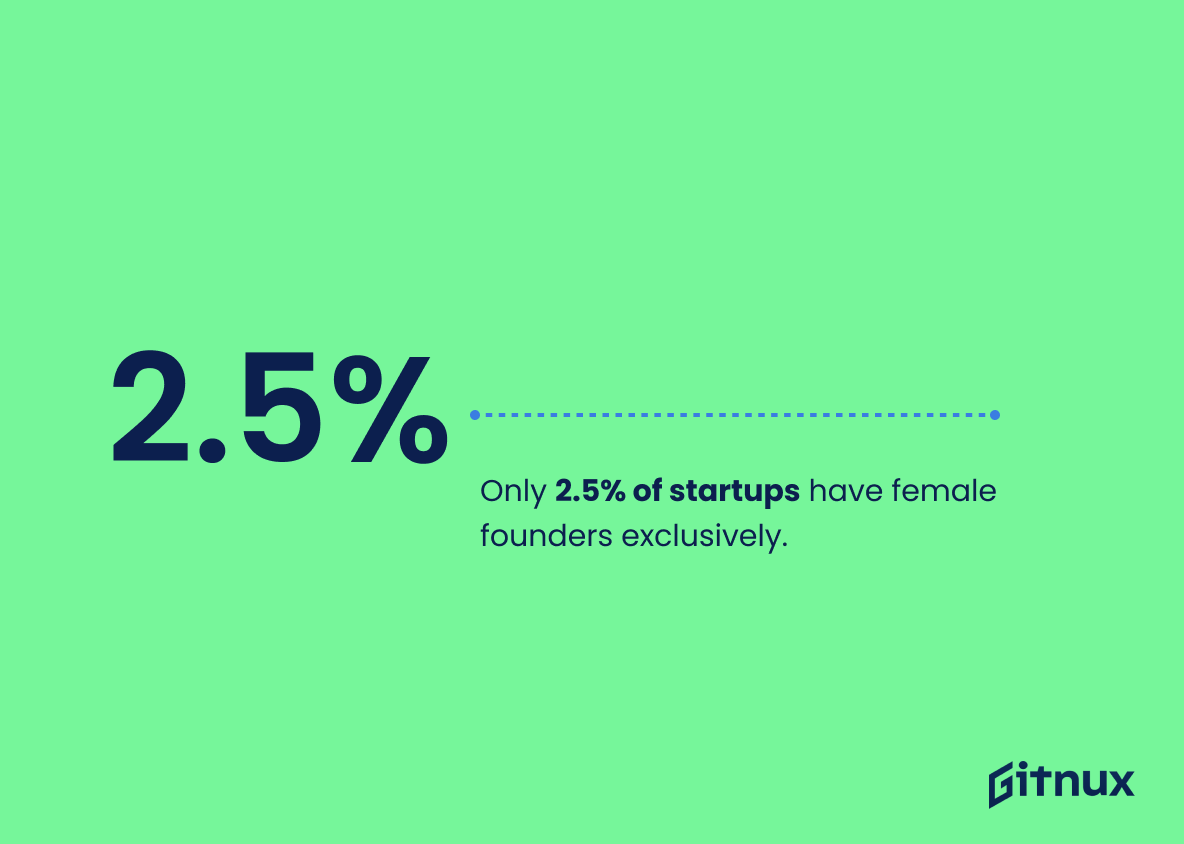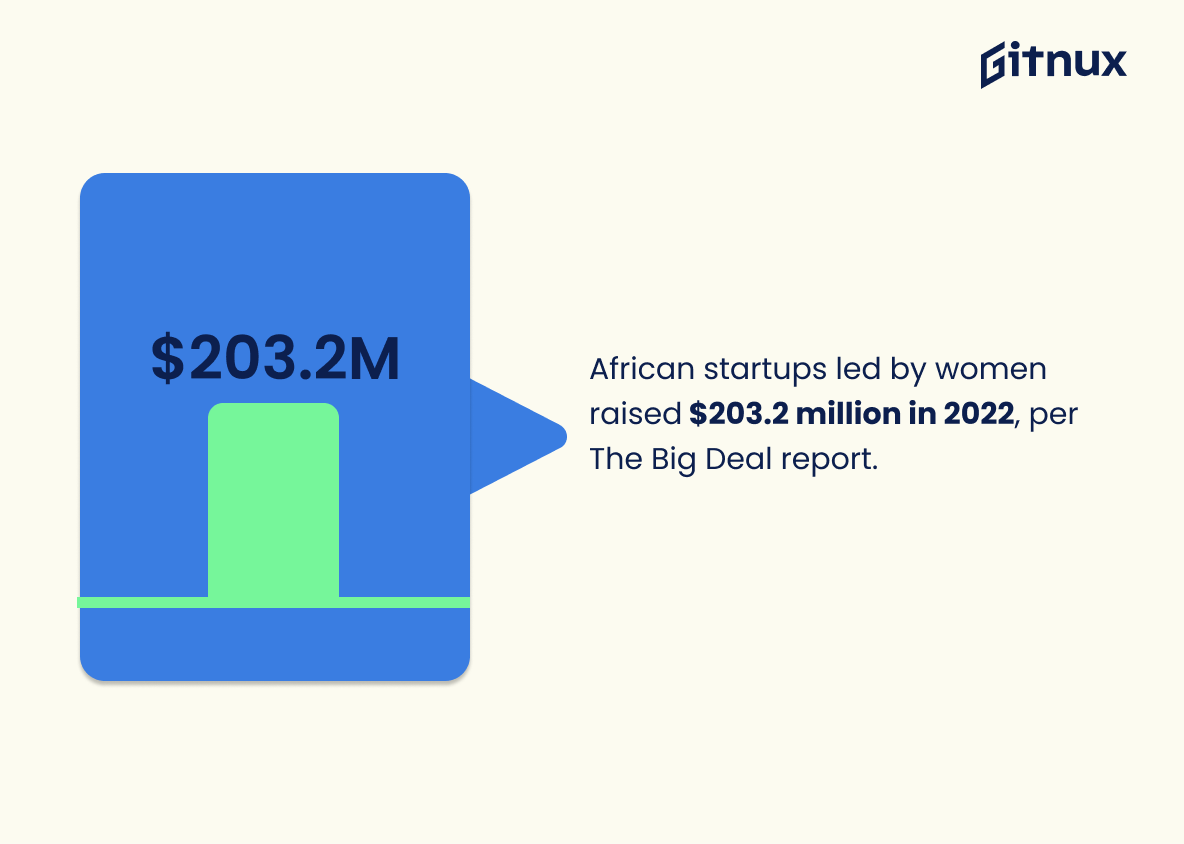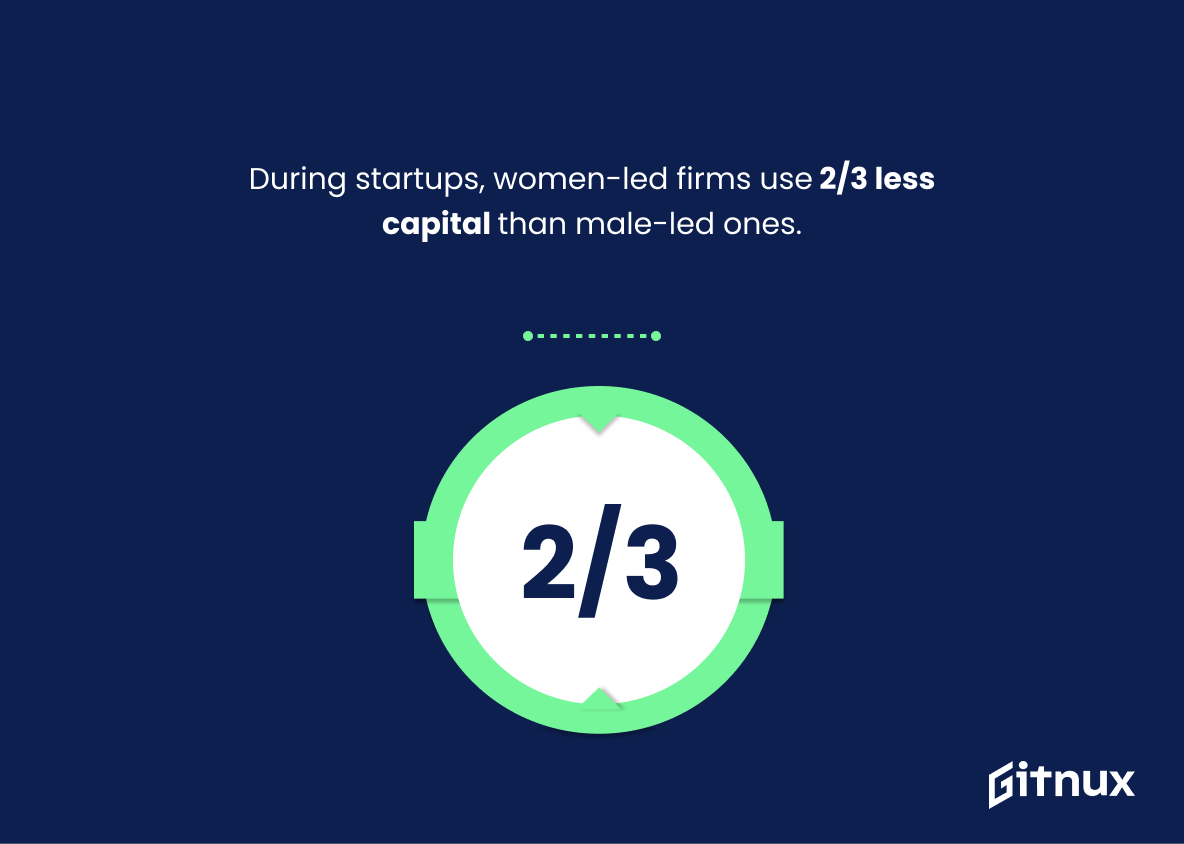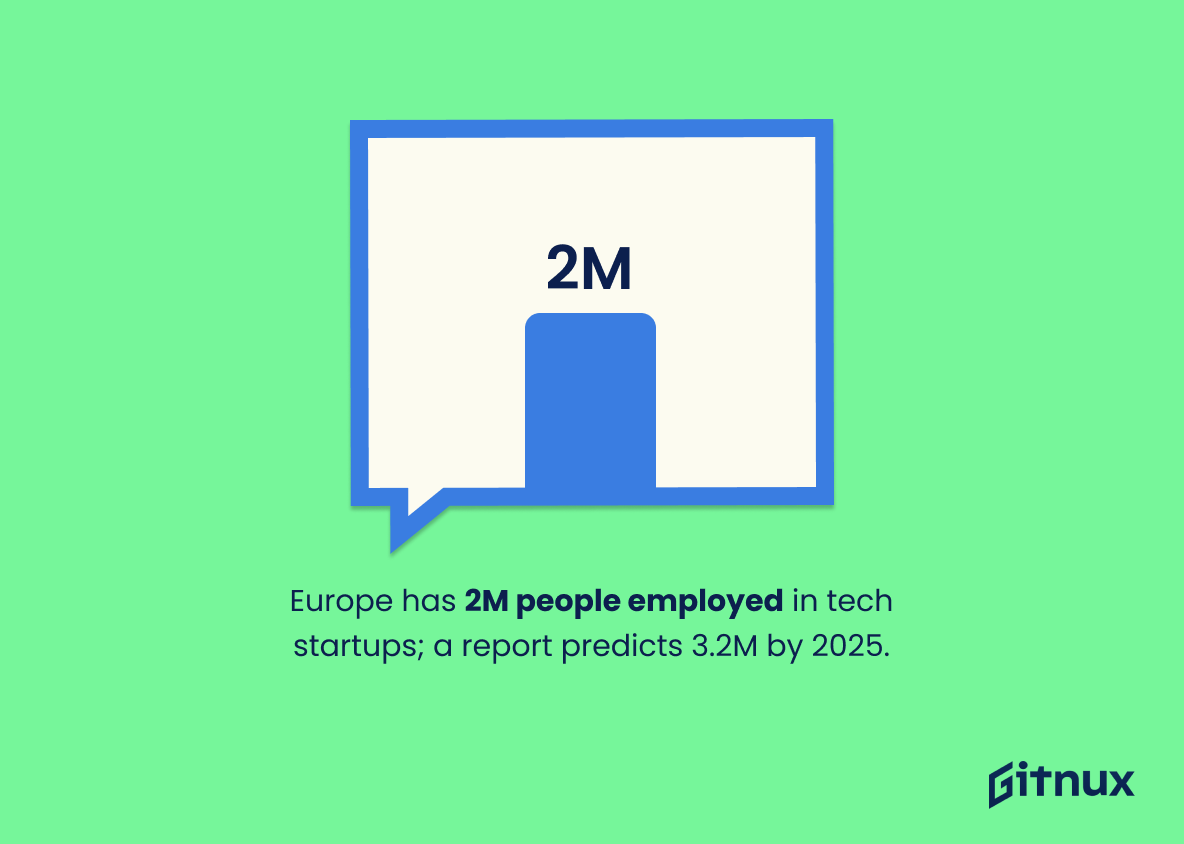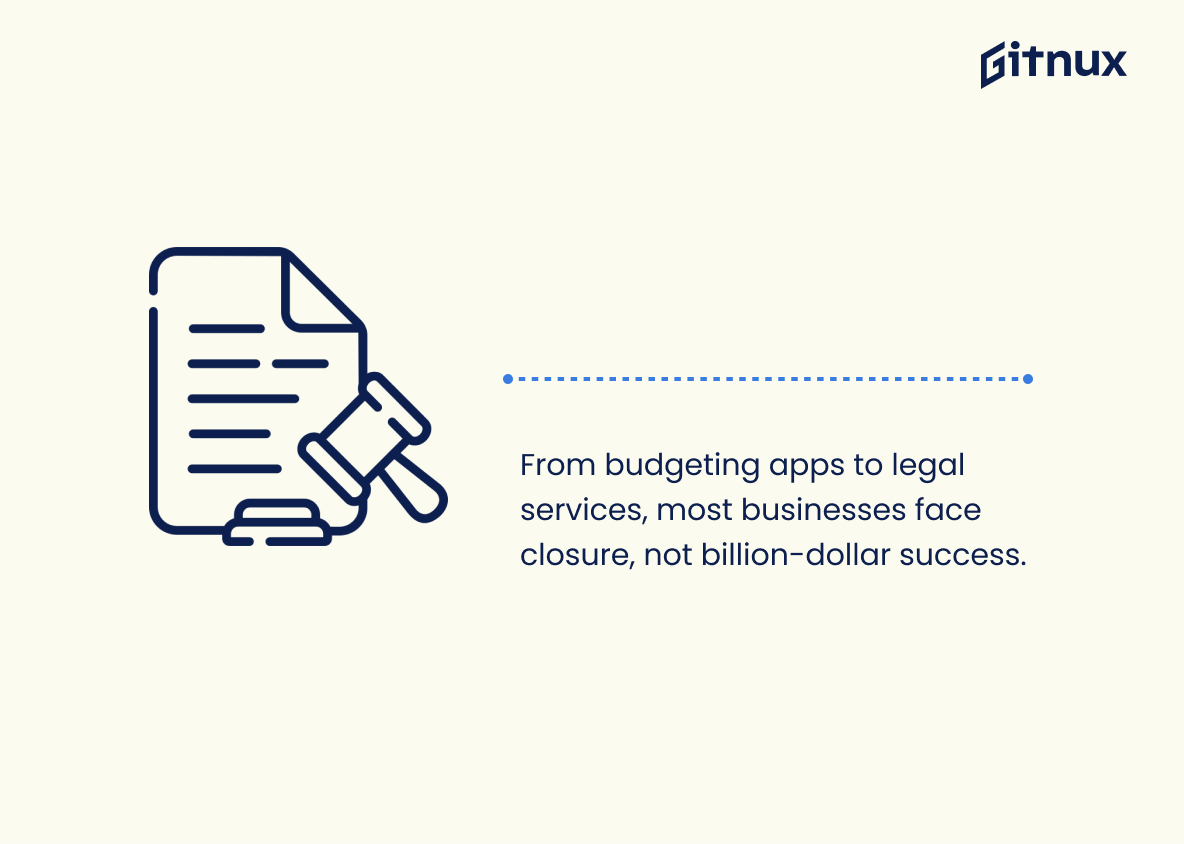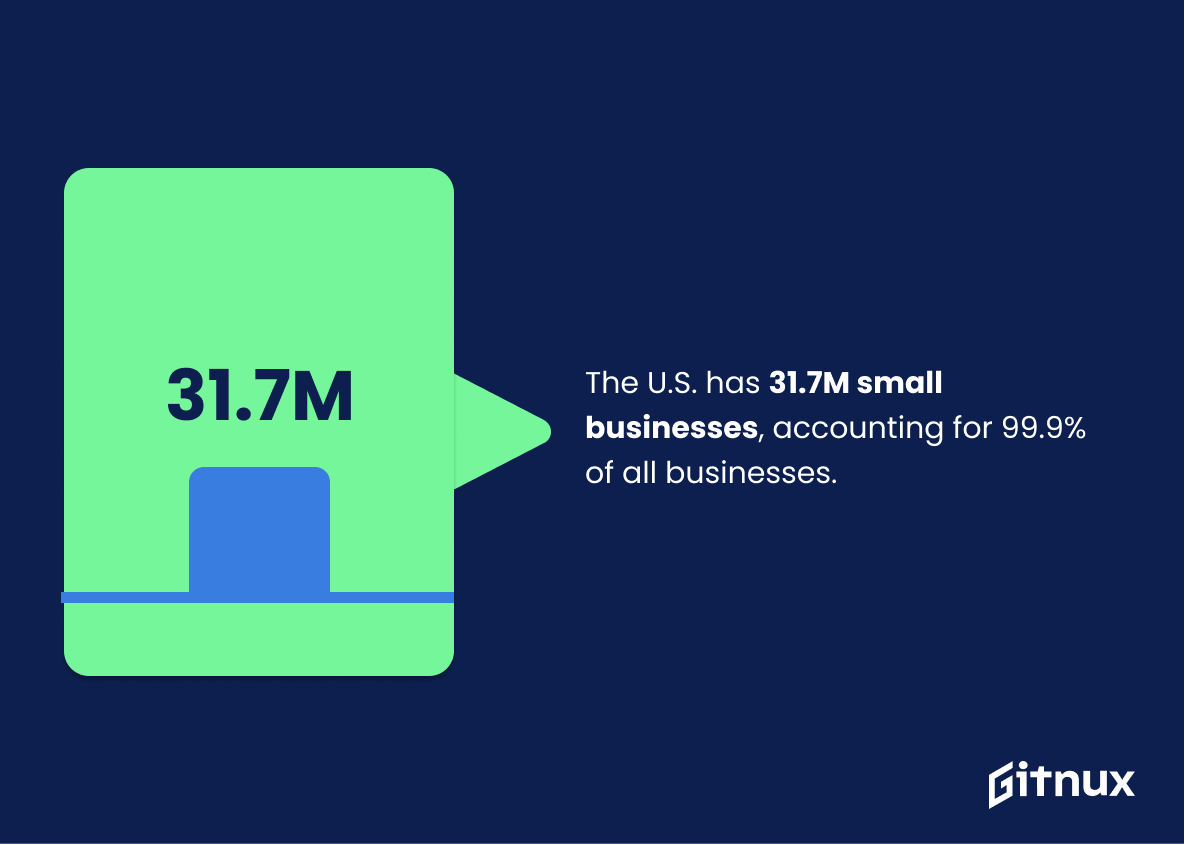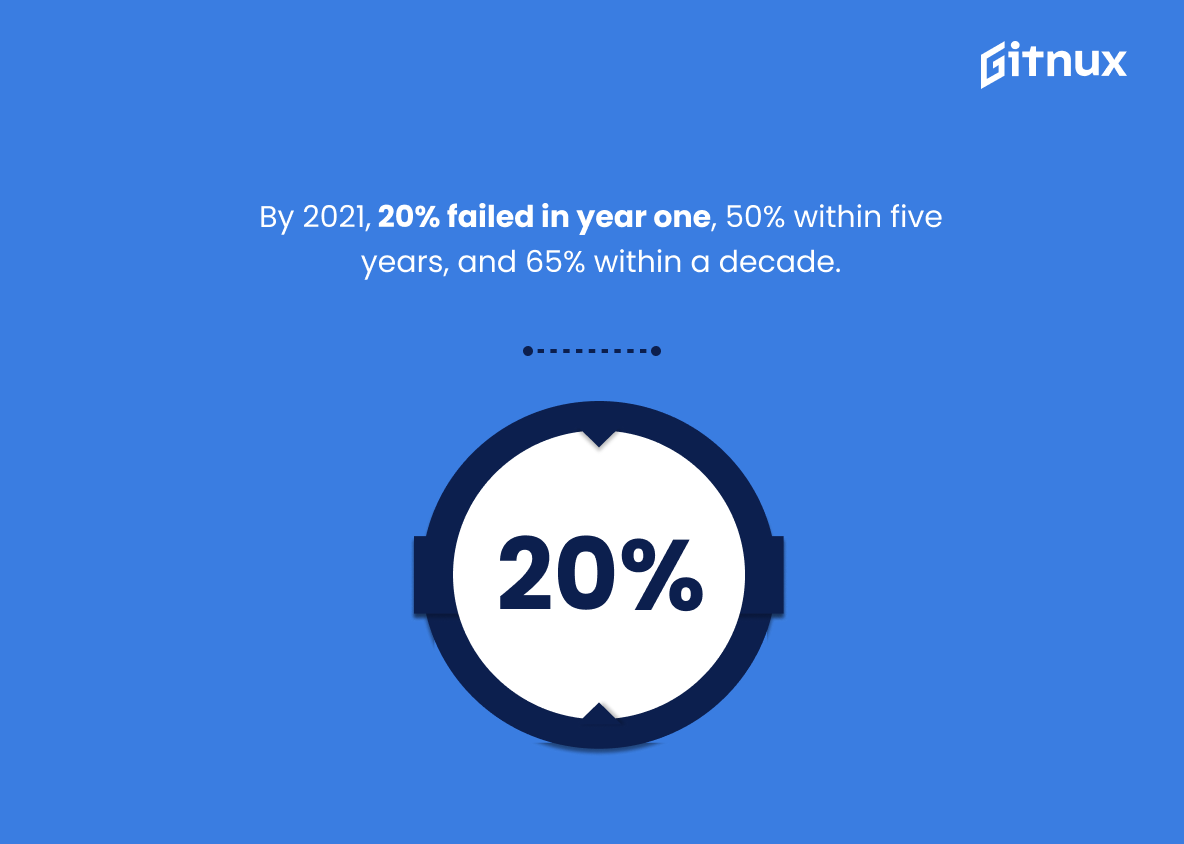Statistics are an essential part of any business, especially when it comes to startups. Knowing the right numbers and trends can help entrepreneurs make informed decisions and stay ahead of the competition.
This blog post will explore the latest startup statistics, including their success rates, job statistics, and more. We’ll also look at how the startup landscape has changed over the past few years and what the future may hold. By the end of this post, you’ll have a better understanding of the current state of startups and how to use data to your advantage.
Startups: The Most Important Statistics
The number of people employed across Europe in tech startups has jumped 43% in the last four years
There are currently 31.7 million small businesses in the United States, which make up 99.9% of all U.S. businesses.
Startup Statistics for the Fintech Industry
According to CB Insights for their Global Fintech Report, the global financial sector will be worth $26.5 trillion in 2022, at a compounded annual growth rate of 6%.
The projected growth of the fintech industry from $11.8 billion in 2018 to about $306 billion in 2023 is attributed to a desire to capture market share.
The projection of the fintech industry growth is estimated at a compounded annual growth rate of 22.17%.
As of 2023, the fintech space is worth $179 billion. There are approximately 30,000 fintech startups. Visa is the largest fintech company with a valuation of almost $500 Billion.
The fast-growing space is projected to reach $174 billion in 2023. And is predicted to reach $188 billion by 2024.
Women in Startups
In 2021, 49% of startups were formed by women
Only 2.5% of startups have solely female founders.
Female-founded startups are less common than small enterprises or established businesses, but they have been increasing recently.
A report released by The Big Deal, a research firm tracking startups across the continent, has revealed that African startups active on the continent and led by women raised $203.2 million in 2022.
Though still a significant amount, it is 58% less than what enterprises of this sort mobilized in 2021.
During the startup phase, women-led companies use two-thirds less capital than male-led companies.
Startups with at least one female founder received 17.2% of venture capital for the first half of 2022.
The MasterCard Index of Women Entrepreneurs 2017 listed two African countries, Uganda (34.8%) and Botswana (34.6%), as having the highest percentage of women entrepreneurs globally.
Globally, men account for 92% of partners in the top 100 venture capital firms, and female-founded start-ups receive only 2% of total investments by venture capitalists.
Startup Stages
A report released by The Big Deal, a research firm tracking startups across the continent has revealed that African startups active on the continent and led by women raised $203.2 million in 2022.
Though still a significant amount, it is 58% less than what enterprises of this sort mobilized in 2021.
The survey notes that although venture capital on the continent has been relatively successful, it has helped less than 3% of startups with female founders and only 4% of female entrepreneurs.
An early-stage startup begins with a scalable idea that attracts funding. This phase covers the time before securing your first Series A funding round. There are several imprecise terms used to describe your position in this phase, including seed, pre-seed, post-seed, pre-A, seed extension and others.
When you apply to a starter accelerator program, In exchange for 5‒10% of your equity, you’ll gain exposure to a wide range of advisors and experienced entrepreneurs who’ll help you develop your product, hone your business model, and — most importantly — connect with investors.
Statistics for Jobs Concerning Startups
The number of people employed across Europe in tech startups has jumped 43% in the last four years, making the sector by far the fastest-growing and most resilient job creation engine throughout the continent.
With 2 million people now employed in tech startups across Europe, the European Startups report predicts as many as 3.2 million people will be employed in European tech by 2025.
With small businesses employing over half of the UK workforce, a strong sector recovery will be needed to achieve significant employment growth.
But following the collapse of small business jobs down by 24.4% in May 2020, jobs in February 2021 remained 10.6% below February 2020 levels.
The report found that women, employees aged 30 and under, and those in customer-centric jobs (such as hospitality) experienced particularly sharp declines in employment in the small business sector during the early months of the crisis, with growth continuing to lag into 2021.
How Often Do Startups Fail?
The reality is that 90% of startups fail.
From budgeting apps to legal matchmaking services, businesses across every industry see more closures than billion-dollar success stories.
About 10% of startups fail before they reach their second year.
There are currently 31.7 million small businesses in the United States, which make up 99.9% of all U.S. businesses.
Many small businesses start up every month but the failure rate is high.
As of 2021, 20% failed in the first year, 50% within five years, and 65% within 10 years.
Supplementary Statistics
In 2021, there were over 61,000 active tech startups in the United States.
This speaks to the entrepreneurial spirit of the nation and the potential for innovation and growth that exists within the tech industry. It is a reminder of the importance of startups in driving economic growth and creating jobs. This statistic is a powerful indicator of the potential for success that exists in the tech startup space.
90% of startups eventually fail.
This highlights the importance of careful planning and preparation when launching a startup, as well as the need to be aware of the potential pitfalls that could lead to failure. It is a cautionary tale for entrepreneurs, and a reminder that success is not guaranteed.
55% of startup founders are first-time entrepreneurs.
Even those without prior experience in the startup world can make a successful go of it. It also speaks to the potential of the startup industry, as it demonstrates that anyone with a great idea and the drive to make it happen can make their dreams a reality.
Female-founded startups received only 2.3% of venture capital investments in 2020.
Female-founded startups are not receiving the same level of investment as their male-founded counterparts, which can have a significant impact on their ability to grow and succeed. This lack of investment can be a major barrier to entry for female entrepreneurs, and it is essential that we take steps to address this issue and ensure that all startups have equal access to the resources they need to succeed.
In 2020, the average age of startup founders was 42 years.
The average age of startup founders is no longer the young, tech-savvy college student, but rather a more experienced individual. This could mean that the startup world is becoming more accessible to those with more life experience, or that the startup world is becoming more competitive and requires more experience to succeed. Either way, this statistic is an important insight into the current state of the startup world.
In 2021, the US tech startup industry employed approximately 771,000 people.
The industry is a major employer, providing jobs to hundreds of thousands of people. This is an important point to consider when discussing the impact of the startup industry on the US economy.
15% of US-based startups are founded by immigrants.
This highlights the invaluable role immigrants play in the success of US-based startups, and serves as a reminder of the importance of fostering an inclusive and welcoming environment for entrepreneurs of all backgrounds.
In 2020, there were over 50,000 startups in India.
It is a powerful indicator of the growth of the startup ecosystem in India, and serves as a reminder of the immense opportunities available for aspiring entrepreneurs. As such, it is an important statistic to consider when discussing startup statistics.
California is home to the highest number of startups in the United States, with over 23,600.
This speaks to the potential of the state to be a hub for innovation and growth, and serves as a reminder of the potential of startups to create jobs and drive economic growth.
Europe has an estimated 33,000 AI startups as of 2021.
This statistic is a clear indication that Europe is a major player in the global startup scene, and is a sign of the potential for further growth and development in the years to come.
73% of all startups have a presence on Twitter.
Having a presence on the platform is essential for businesses to reach their target audience and build a successful brand. It also demonstrates the potential of Twitter as a powerful marketing tool for startups, as it provides a platform to engage with customers, share news and updates, and build relationships with potential customers. This statistic is a valuable insight into the current state of the startup industry and the importance of social media for businesses.
On average, startups take eight days to create a minimum viable product.
It can be used to compare the speed of different startups, and to measure the progress of a startup over time. Additionally, it can be used to inform decisions about how much time and resources should be allocated to creating a minimum viable product. Ultimately, this statistic is an important indicator of the success of a startup.
In 2018, the average seed funding for startups was $2.2 million.
The average seed funding for startups is quite high, suggesting that investors are willing to take risks and invest in new businesses. This is an encouraging sign for entrepreneurs looking to launch their own startups, as it shows that there is a healthy level of investment in the industry. Furthermore, this statistic can be used to compare the current state of the startup industry to previous years, allowing entrepreneurs to gain insight into the trends and changes in the industry.
Conclusion
Startups are an important part of the economy, and the statistics show they are growing. The data shows that more and more people are taking the plunge and starting their own businesses. This is a positive sign for the economy and shows that entrepreneurs are willing to take risks to pursue their dreams. With the right resources and support, these startups can help create jobs and drive innovation. With the right attitude and resources, startups can be a great way to build a successful business.
FAQs
What is a startup?
A startup is a business venture that is typically in the early stages of development and has the potential to grow rapidly.
What are the benefits of starting a business?
The benefits of starting a business include the potential to make a profit, the potential to create a product or service that can benefit others, the potential to be your own boss, and the potential to create a legacy.
What are the risks associated with starting a business?
The risks associated with starting a business include the potential for financial losses, the potential for failure, the potential for legal issues, and the potential for personal stress.
What resources are needed to start a business?
Resources needed to start a business include capital, a business plan, a team of employees, a location, and marketing materials.
What is the best way to finance a business?
The best way to finance a business depends on the individual business and its needs. Options include personal savings, venture capital, angel investors, bank loans, and crowdfunding.
References:
Brimco: “FintechStatistics to know in 2023”, cited in February 2023 (Source)
Exploding Topics: “57+ Incredible Fintech Stats (2023-2025)”, cited in February 2023 (Source)
HubSpot: “How Many Startups Fail?”, cited in February 2023 (Source)
Investopedia: “How Many Startups Fail and Why?”, cited in February 2023 (Source)
Tech Trends KE: “Women-led startups in Africa raised $203.2M in 2022”, cited in February 2023 (Source)
UN: “Women-led tech startups on the rise in Africa”, cited in February 2023 (Source)
Sifted: “In data: how startups are tipped to fuel a post-pandemic jobs surge”, cited in February 2023 (Source)
Startup Magazine: “New Analysis Shows Importance of UK Small Businesses to Job Growth”, cited in February 2023 (Source)
SVB: “What are the three stages of a startup?”, cited in February 2023 (Source)
Equidam: “Average Growth Rate For Startups”, cited in February 2023 (Source)
Incfile: “47+ Women in Business Statistics”, cited in February 2023 (Source)
ZipDo, cited June 2023: Startup Statistics

